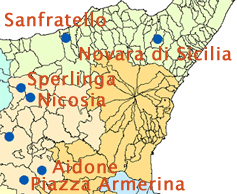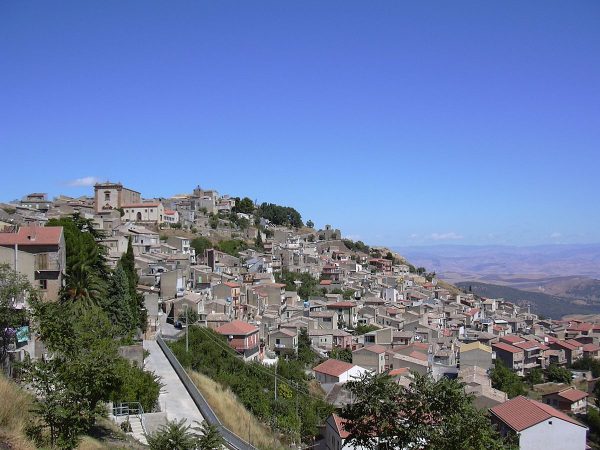Gallo Italico (Spoken Alloglotta): Aidone
Property included in the Register of Intangible Heritage of Sicily (REIS) The Gallo-Italics of Sicily (or Gallo-Italics of Sicily) are an alloglot linguistic island within central and eastern Sicily composed of dialects in which characteristics, above all phonetic, typical of northern Italian dominate, that is, belonging to the speeches of the linguistic group Gallo-Italic, in which there is a Gallo-Celtic substrate and a Germanic superstrate, widespread in much of Northern Italy and historically belonging to the macro-region south of the Alps that the Romans called Cisalpine Gaul.
The Gallo-Italics of Sicily (or Gallo-Italics of Sicily) are an alloglot linguistic island within central and eastern Sicily composed of dialects in which characteristics, above all phonetic, typical of northern Italian dominate, that is, belonging to the speeches of the linguistic group Gallo-Italic, in which there is a Gallo-Celtic substrate and a Germanic superstrate, widespread in much of Northern Italy and historically belonging to the macro-region south of the Alps that the Romans called Cisalpine Gaul.
The formation of these linguistic islands in Sicily dates back to the Norman period, in which the Altavilla favored a process of Latinization Sicily by encouraging an immigration policy of people coming from France (Normans, Provençals and Bretons) and northern Italy (mainly Piedmontese and Ligurians) with the granting of lands and privileges.
The speech of these settlers coming from northern Italy has been maintained for a long time in Sicily, even if the linguistic islands created have begun to be eroded by the impact, first, with the Sicilian dialects, and in more recent times, with that of television and of compulsory school, envisaging the concrete danger of a disappearance of this ancient and precious historical and glottological Sicilian testimony.
The places included in the REIS - "Sicilian Intangible Heritage Register" - Book of Expressions - Speech Alloglotta Gallo Italico - established by the Sicilian Region I'm:
Nicosia, Sperlinga, Piazza Armerina and Aidone in the province of Enna; San Fratello and Novara di Sicilia in the province of Messina.
Other places, although not included in the REIS, are interested in the spread of the Gallo-Italian language among these, to remain in the province of Messina:
- Fondachelli Fantina
- Francavilla di Sicilia
- St. Sunday Victory
- Roccella Valdemone
- San Piero Patti
- acquedolci
----------------
Technical data sheets prepared by: Region of Sicily - Department of cultural heritage and Sicilian identity - CRicd: Regional center for inventory, cataloging and documentation and Sicilian regional film library
A ddinga ch-agn 'giurn' us' â v'rsùra
Nan eja com-a cudda c'tatìna:
Tu l-àj-a p'rdunè knows this morning
O mirt 'to s' ncula cu russura.
Idda n-testa s' ntruscia a mant'lina.
Nan vò ntras'r, no, dâ to purtina,
O scianch 'a l-om' vo r'stè â v'rsura.
Rann à stait 'u b'sogn' ch-à s'ntùit ':
O to n'mich ', sa parra s' gghj' away!
And nan unsciass'n '... apiece! ... Ngià s'ddìa!
Tutt 's' n-àn' anè a zappè nt 'l-ùit'.
Race d 'scecch' vigghj '?!
Annèv'n! P 'vui nan is u Cuns'gghj'
Fasgìn 'stu faùr',
Advance 'cà v-avìa v' fè cû scur '.
D 'frà v' prii, fasgì'n 'sta car'tà:
I gint 'von' agnungh 'a l'bartà.
it's not like that town:
you have to forgive her if this this morning
to your merit approaches with blush.
she wraps her cape on her head.
does not want to enter, no, through your door
at the side of man he wants to stay in the countryside.
great was the need he felt:
to your enemy, if he speaks he throws himself on him!
On-line Encyclopedia Treccani - Gallo-Italic, community [Last consultation 27-04-2016]



